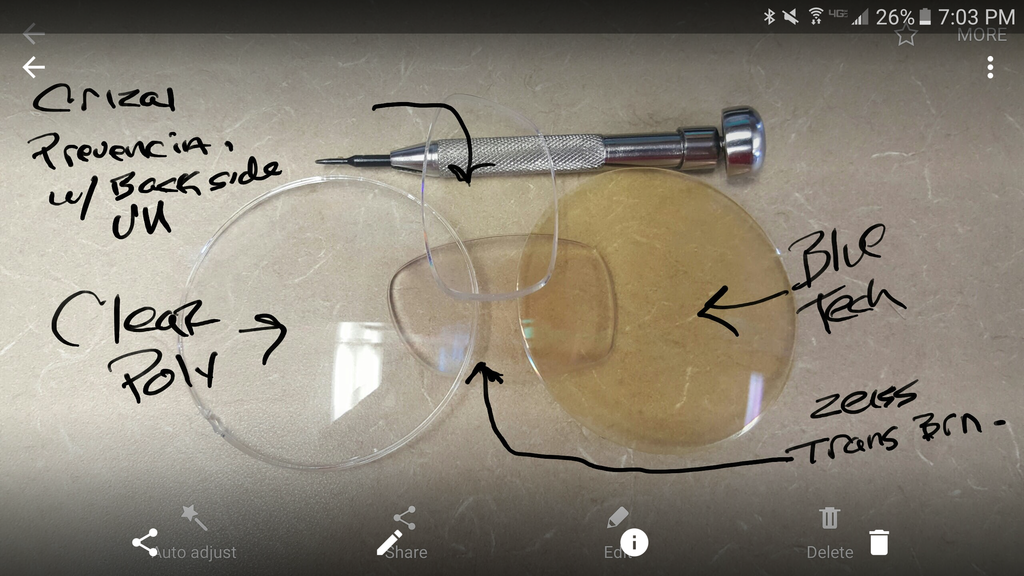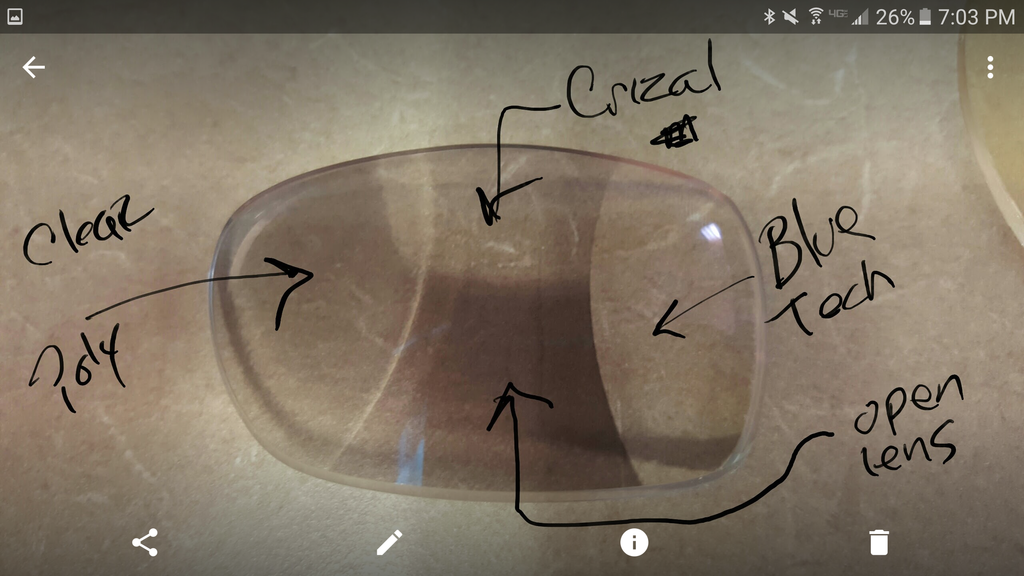We now have some AR coatings that have back-side UV blocking. (I can't remember the names.)
I remember that the big brouhaha was a finding that regular ARCs tend to selectively reflect invisible UV right back to into your peepers.
So, what about this?
Say you have a photochromic lens...and you have ARC on the back that blocks UV from reflecting.
Is this good or bad?
If it's destructively interfered with or somehow absorbed, then less UV gets into the lens to darken it (from the back...the front's OK, still). So UV block on back side of photochromics BAD! (But maybe with regular AR, it's bouncing off, anyway, so..no big loss?)
OR
If the UV is transmitted through the lens, then there's extra UV to darken the lens. Back side UV block AR GOOD!
Which is it?
I'm so confused.






 Reply With Quote
Reply With Quote





Bookmarks